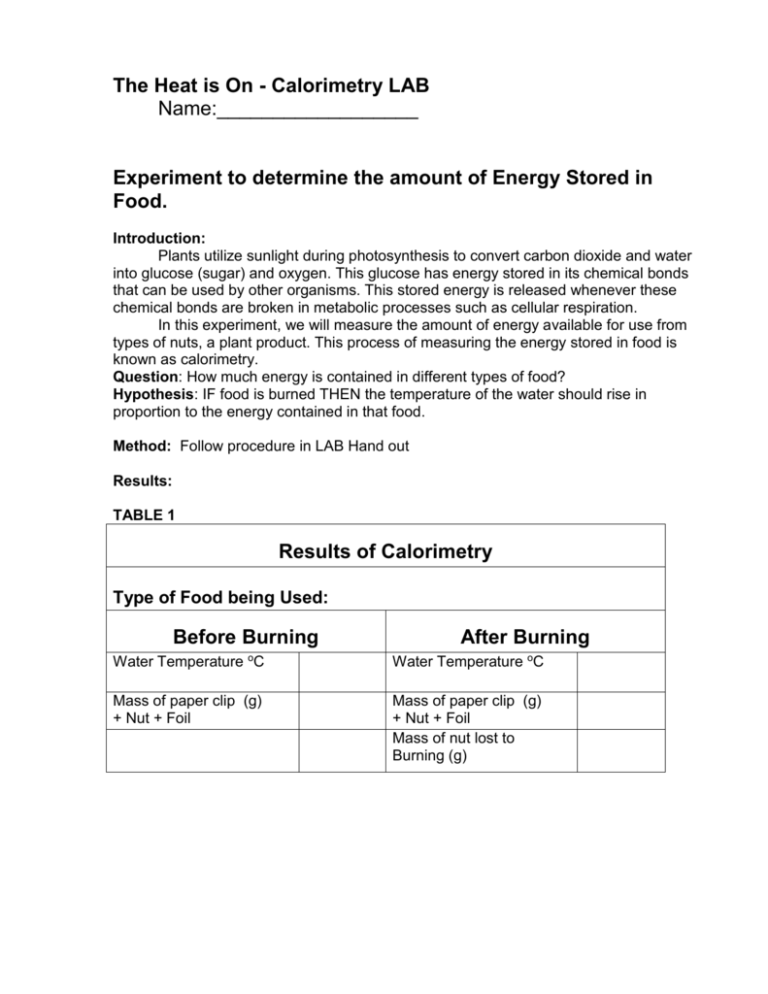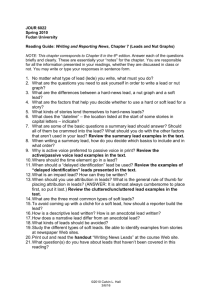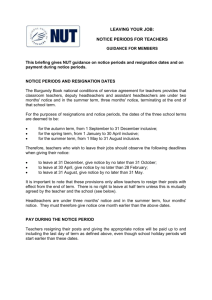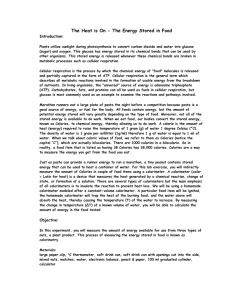LAB Handout and Questions
advertisement

The Heat is On - Calorimetry LAB Name:__________________ Experiment to determine the amount of Energy Stored in Food. Introduction: Plants utilize sunlight during photosynthesis to convert carbon dioxide and water into glucose (sugar) and oxygen. This glucose has energy stored in its chemical bonds that can be used by other organisms. This stored energy is released whenever these chemical bonds are broken in metabolic processes such as cellular respiration. In this experiment, we will measure the amount of energy available for use from types of nuts, a plant product. This process of measuring the energy stored in food is known as calorimetry. Question: How much energy is contained in different types of food? Hypothesis: IF food is burned THEN the temperature of the water should rise in proportion to the energy contained in that food. Method: Follow procedure in LAB Hand out Results: TABLE 1 Results of Calorimetry Type of Food being Used: Before Burning After Burning oC Water Temperature oC Mass of paper clip (g) + Nut + Foil Mass of paper clip (g) + Nut + Foil Mass of nut lost to Burning (g) Water Temperature TABLE 2: Data Analysis from Nut Calorimetry Mass of nut lost to burning (g) Temperature change (difference) of 100 grams of water (oC)? How many calories were used to produce the observed temperature change in the 100 grams of water? [remember 1 calorie = heat needed to change the temperature of 1 g of H2O by 1oC] How many calories per gram did your nut have? Answer on a SEPARATE SHEET OF PAPER: Analysis Questions: 1. List two sources of experimental error in your experiment. 2. Did you perform repeat trials of your experiment? Explain what effect increasing the number of repeat experiments has on the confidence in your data. 3. Where did the energy stored in the nut originally come from? 4. What process accounts for the energy stored in the nut, & where specifically is the energy stored? 5. What simple sugar made by plants is a common source for stored energy? 6. Which food-groups might a nut contain? 7. What is the name for the potential energy stored in the molecules of these food groups? 8. What process accounts for the stored energy in glucose being converted into the energy stored in ATP? 9. In this experiment, discuss what happened to the energy stored in the nut. 10. Why was the final mass of the nut less than the original mass of the nut? Remember that matter can't be destroyed in a chemical reaction so where did it go? (Hint. You need to account for what the atoms are converted into and where they go.).





